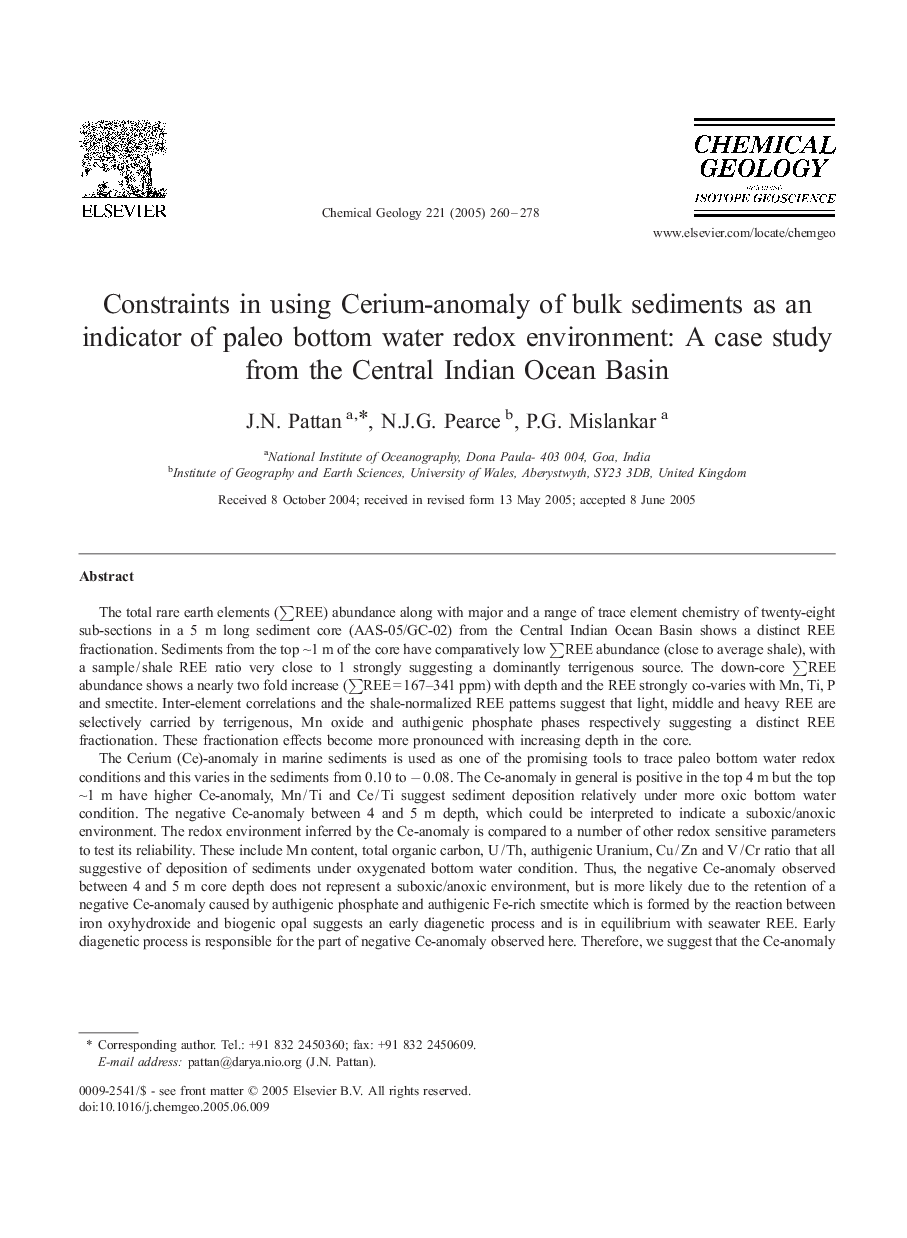| Article ID | Journal | Published Year | Pages | File Type |
|---|---|---|---|---|
| 9529103 | Chemical Geology | 2005 | 19 Pages |
Abstract
The Cerium (Ce)-anomaly in marine sediments is used as one of the promising tools to trace paleo bottom water redox conditions and this varies in the sediments from 0.10 to â 0.08. The Ce-anomaly in general is positive in the top 4 m but the top â¼1 m have higher Ce-anomaly, Mn / Ti and Ce / Ti suggest sediment deposition relatively under more oxic bottom water condition. The negative Ce-anomaly between 4 and 5 m depth, which could be interpreted to indicate a suboxic/anoxic environment. The redox environment inferred by the Ce-anomaly is compared to a number of other redox sensitive parameters to test its reliability. These include Mn content, total organic carbon, U / Th, authigenic Uranium, Cu / Zn and V / Cr ratio that all suggestive of deposition of sediments under oxygenated bottom water condition. Thus, the negative Ce-anomaly observed between 4 and 5 m core depth does not represent a suboxic/anoxic environment, but is more likely due to the retention of a negative Ce-anomaly caused by authigenic phosphate and authigenic Fe-rich smectite which is formed by the reaction between iron oxyhydroxide and biogenic opal suggests an early diagenetic process and is in equilibrium with seawater REE. Early diagenetic process is responsible for the part of negative Ce-anomaly observed here. Therefore, we suggest that the Ce-anomaly of bulk sediments as an indicator of paleo-ocean bottom water redox conditions needs to be used with a caution.
Related Topics
Physical Sciences and Engineering
Earth and Planetary Sciences
Geochemistry and Petrology
Authors
J.N. Pattan, N.J.G. Pearce, P.G. Mislankar,
